You Have Been Washing Dishes The Wrong Way! Here Is The Best Way To Do It
It is often the most hated part of being a child or a young adult, living with parents or even an adult living independently - the household chores. Be it the cleaning or doing the laundry, the daily chore is a part of the daily routine, and one of them is cleaning the dishes.
Your cookware and your dishes need to be clean. Be it your dirty pots or pans, or your plates and glasses, they need to be spotless for the next time and many, sadly, don’t know the correct method to do it.
Usually, people clean each dish individually, that is, they scrub it till the life runs out of them, followed by washing and rinsing them before they move on to the next dish, and repeat the entire cycle all over again.
Well, you may say that everyone has their style and their quirky methods. While that may be true, but it is often better if the methods one follows are efficient, especially when you consider the time limits you may have in today’s world of busy schedules.
So, here is, potentially, the best way that anyone can use while turning the dishes from greasy and dank to spotless. You may ask "Why the best?" Well, it is easy to follow, it is effective, and it saves not only time but also the muscle when you do it yourself. What’s more, you can easily tune the details in each step to your fit your needs.
1. The Dish Soap:
Select the dish soap which would give you good results. It is preferable to use such soap, which has antibacterial properties with some grease-degrading enzyme, which would make your work a lot easier. Several dish soaps can be used directly, while others need to be dissolved in a little water. Read the label clearly before using any dish soap.
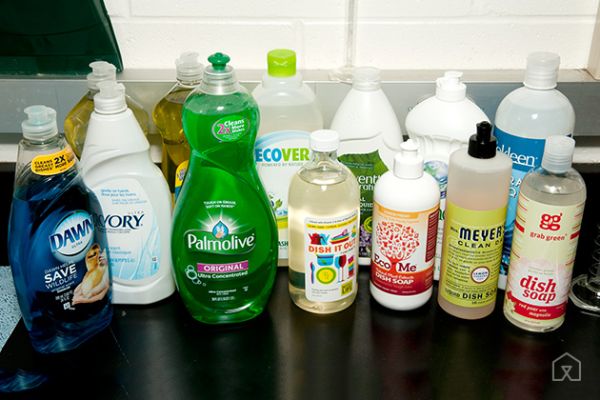
Can you make the right choice?
Photo credit: thesweethome.com
2. Set up:
After you have decided on the choice of dish soap, it is preferable for you to gear up. That is, it is better for you to wear gloves. They not only protect your skin from the soap but also prevent them from getting dry after you have completed cleaning up. You would want to wear gloves, rubber gloves especially if you have sensitive skin on your hands.
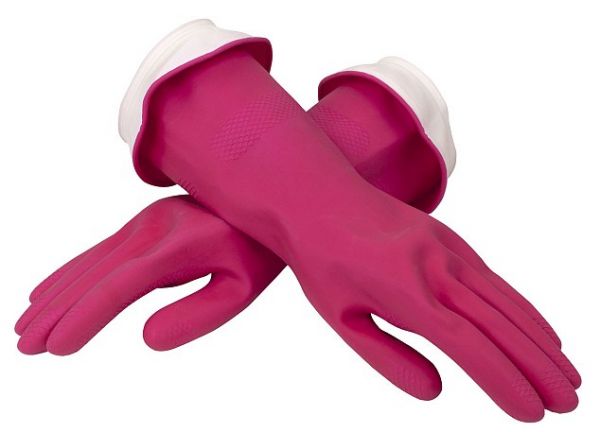
Gloves, the trendy solution to wet hands
Photo credit: dailymail.co.uk
3. Prep your dishes:
If you have food stuck to your dishes, your plates or bowls, you must scrape them off. It is true since the larger pieces may clog your sink if you try to wash them down while the cleaning up.
Similarly, if you cannot scrape off the oil stains or grease on your pots or saucepans, especially after you have sautéed or fried in them or after they are burnt at the bottom or have dried out, there is an easy but effective tip you can use.
Just put a little of the dish washing soap in the particular vessel and add water to it. Let it aside for a little while, for about half an hour. You can also use vinegar for this purpose. The acid quickly removes the scraps that stick to the bottom of the dish, which can then be washed off or even wiped off, followed by a final wash.
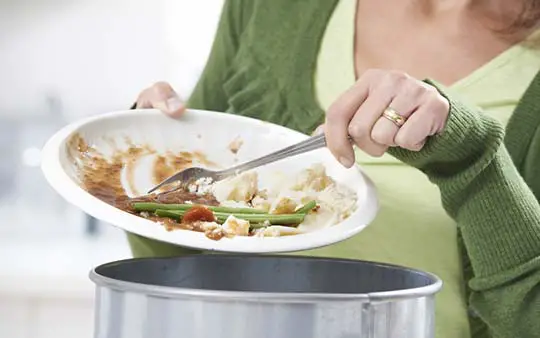
Your sink needs protecting too!
Photo credit: keywordsuggests.com
4. Prep your water:
You would want to fill one of the sinks with water by plugging it, or you may also use a large plastic tub for this. Fill it up with water, the hotter, the better. If you are wearing gloves, you may be able to tolerate hot water so use this to your advantage.
Hot water is better at dissolving stains and sanitizing your crockery compared to cold water. Then add your dish soap to this water and dissolve it until you see froth developing. Finally, plunge your cookeries into the mixture, making sure that bigger items go at the bottom. This will make it easier for you to clean them later.
5. Start with what goes into your mouth:
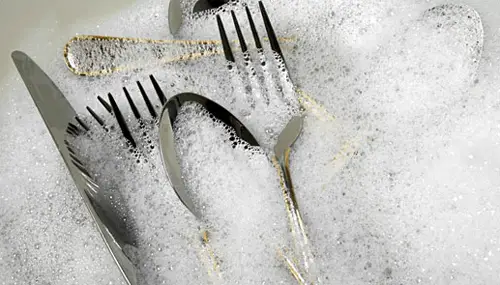
Waiting for the silver to sparkle again!
Photo credit: onegoodthingbyjillee.com
Start with all those utensils that you use directly for eating. This includes all the silverwares such as spoons, forks, knives along with crockeries like cups, mugs, your plates, saucers, bowls, and glasses.
Immerse the items into the washing soap-water mixture and scrub them with a sponge. If stains remain, fill the elements with the liquid as you did for stubborn stains earlier on your pots.
Finally, use a stronger scrubber such as iron wool to remove the stains. However, be careful not to apply too much pressure when you use iron wool since it may scratch the surface. After you have scrubbed the muck off, wash them in cold water.
Next, move on to your pots and pans. Remember the burnt vessels in which you put some dish soap (or vinegar) in the earlier step. Use a piece of newspaper or tissue and wipe off the muck from the bottom of the dishes, which by now would quickly come off. If not, use the iron wool to scrape the utensil gently. After you have removed much of the scraps, wash your pot or saucepan in hot water.
During the washing step, it is recommended that you change the water after some washes since it helps replenish the grease-removing capacity of the liquid.
6. Dry:
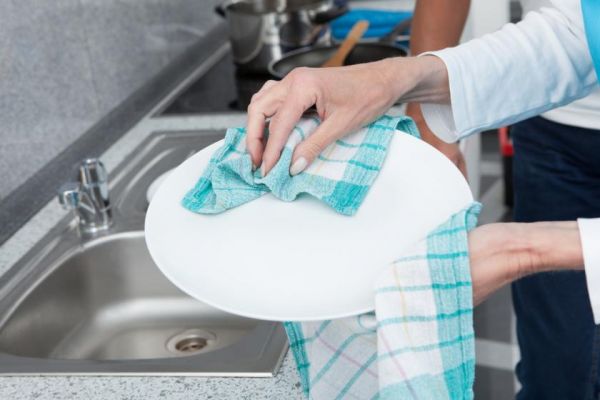
The humble towel, the handy tool to dry almost anything
Photo credit: medicaldaily.com
The simplest way to dry your wet dishes is to let them stand and air-dry. If not, you may use a towel and wipe them dry.
7. Check:
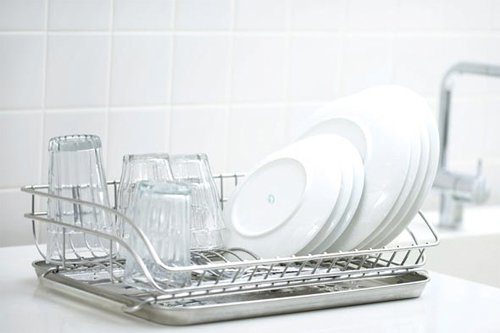
Check before you regret
Photo credit: onegoodthingbyjillee.com
The easiest way to check if your utensils are clean is to run your bare finger over the vessel. If you can hear a distinct “squeak” while you do this, it means that the job is quite complete. If not, there may still be some grease left.
If you see a thin, whitish film over the silverware or the glass, it may indicate that the dish soap has not been completely removed. You may want to wash such utensils again in water without the soap in such a case. You may also want to consider using a different soap altogether.
8. Clean your tools:

A wise worker takes care of his tools!!
Photo credit: howstuffworks.com
After you have completed doing your dishes and have set them aside, you should turn your attention to cleaning your tools. These include the sponge bar or the brush and also the iron wool.
It is often preferable to wash them with water, followed by a wash with the same dish soap, followed by a quick rinse in running water. It helps kill any bacteria that may be present in the brushes you used. Also, don't forget to clean your sink before you take off your gloves.
Washing dishes does not have to be the dreaded task that many of us perceive it to be. Turn on some music and groove while shining your silver and china. And, use the method described here to save not only time but also effort while you work away.